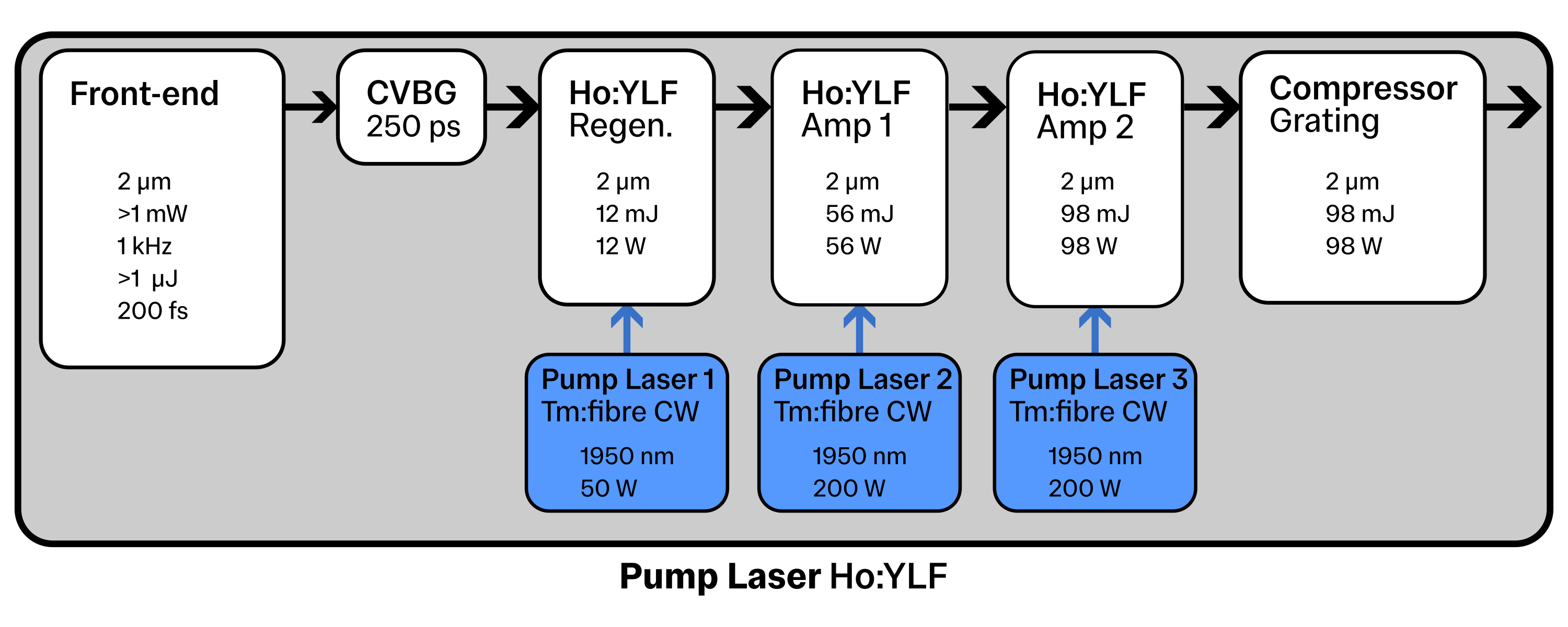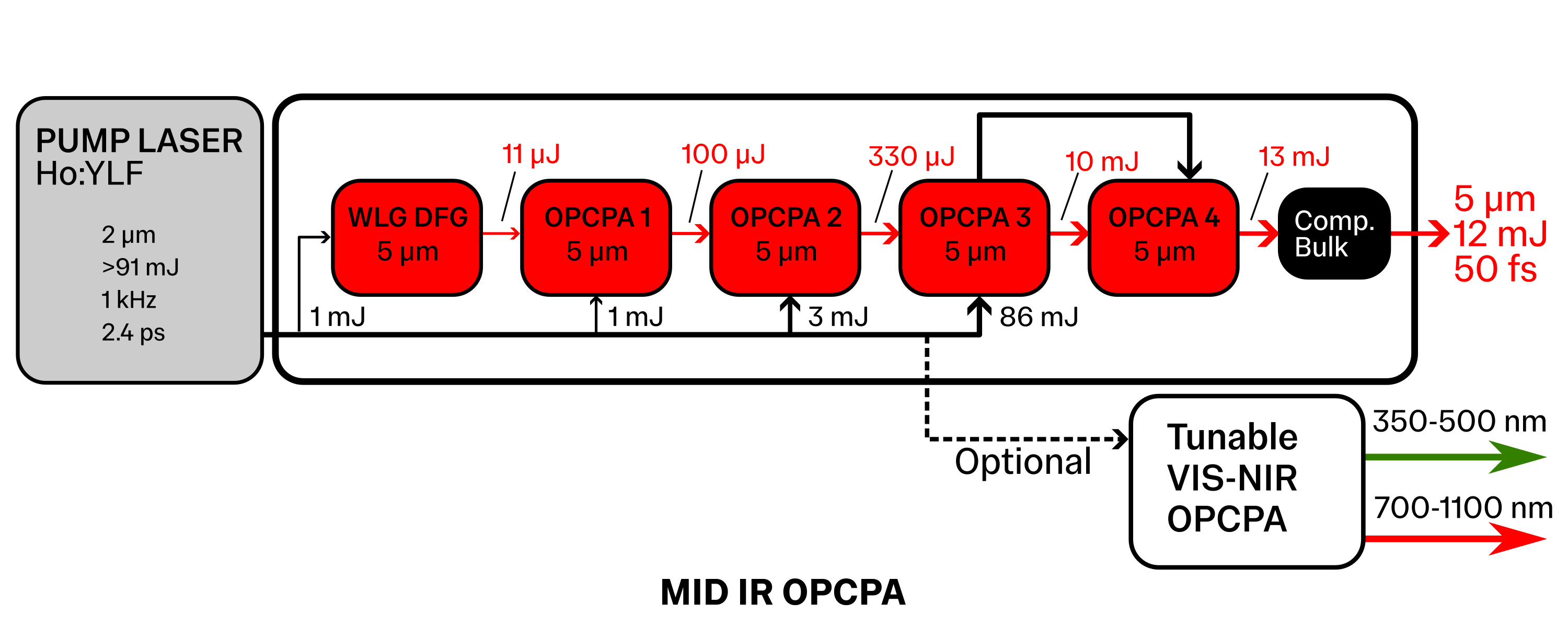LUXD is powered by a world unique MID-IR OPCPA laser system, developed by Class 5 Photonics.
The system consists of two main parts:
- High Energy Ho:YLF 2 µm pump laser
- High Energy Mid-IR OPCPA Laser
The basic parameters of each system can be seen below.
| Ho:YLF | OPCPA | |
|---|---|---|
| Wavelength | 2 μm | 5 μm |
| Pulse Energy | 93 mJ | 12 mJ |
| Pulse Length | 2.4 ps | 50 fs |
| Repetition rate | 1 kHz | 1 kHz |
Lasers
*Laser design in development and subject to change*
The OPCPA is pumped by a high energy 2 μm Holmium-doped Yttrium Lithium Fluoride (Ho:YLF) Chirped Pulse Amplification (CPA) pump laser.
This system begins of an initial down converting of the Ytterbium 1030 nm oscillator. The low pulses energy femtosecond pulses are stretched using Chirped Volume Bragg Gratings (CVBG) to 250 ps to form the seed of the amplifiers. This consists of one regenerative amp and two booster amps, each stage is pumped by continuous wave (CW) fibre coupled Thulium lasers. The amplifiers take the initial seed pulse energy of ~1 μJ and raise it to >98mJ or 100W . The high energy stretched pulses are then recompressed to 2.4 ps using a grating compressor.
A simplified diagram of the laser construction is shown below.


